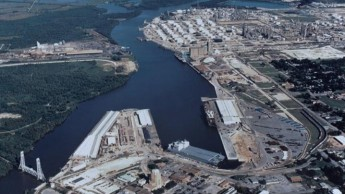1.
Feasibility
Study
2.
Chief's
Report
3.
Construction
Authorization
(WRDA)
4.
Construction
Appropriation
5.
Construction
Completion
| 48 feet | Proposed Depth |
| $748,070,000 | Federal |
| $365,970,000 | Non-Federal |
| $1,114,040,000 | Total |
| $16,620,000 | 2020 |
| $18,000,000 | 2019 |
| $34,620,000 | Total = 5% |
| Senator John Cornyn (R-TX) |
| Senator Ted Cruz (R-TX) |
| Rep. Randy Weber (R-TX-14) |

Sabine-Neches Waterway is one of the nation’s largest waterways by cargo volume (3rd largest). It sends and receives over 100 million tons of cargo annually. Its main sources of strength are its interests in energy sources such as petroleum & natural gas as well as its strong connection to the Unites States military. At least 13 percent of the country’s daily fuel consumption is refined in the area, they are the number one refiner of jet fuel, and they are poised to become the nation’s largest exporter of Liquified Natural Gas. They refine the majority of the jet fuel used by our military as well and are the number one commercial military outload port in the nation. Sabine-Neches prides itself as an integral component in the transportation infrastructure for both the U.S. energy market and the U.S. military.
Through its own business activities in addition to industry related sectors supported by the waterway, Sabine-Neches is responsible for over $106 billion in business activity, over $32 billion in gross product, over $18 billion in personal income, over $6 billion in retail sales, over $3.4 billion in Federal taxes, and more than 288,000 permanent jobs. Jefferson County, Texas (where the waterway is located) has 128,000 permanent jobs thanks to the waterway.
The waterway has not been majorly improved since 1962. Improving the waterway is the first step in keeping the area competitive with other U.S. ports. By deepening the waterway from 40 feet to 48 feet, larger ships will be able to enter the channel, allowing for more cargo to be shipped at a time. In addition, each of the aforementioned economic figures will more than double and the number of permanent jobs will increase by over 61 percent. The construction phase itself will contribute billions to the U.S. economy during its projected time span.
